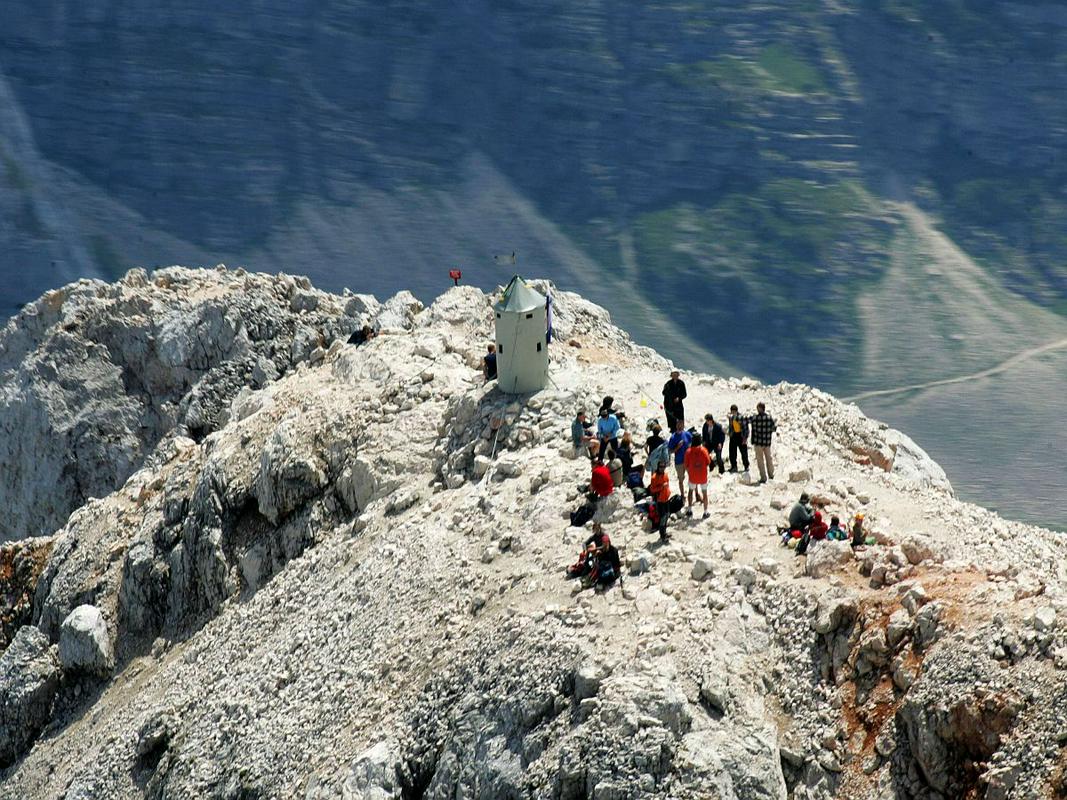
Not just the country’s highest mountain, Triglav is also Slovenia’s national symbol. Its familiar triple peak can be seen on everything from Slovenian euro coins to the national coat-of-arms. On the top of Triglav, at an altitude of 2864 meters or 9396 feet, stands the Aljaž Tower. What may at first look merely like a metal refuge for mountaineers has, over the past 118 years, also come to symbolize Slovenia’s nationhood.
The cylindrical tower was designed by Jakob Aljaž, a priest from the village of Dovje in the Slovenian Alps. This was an era when ethnic German mountaineering organizations vied with their Slovenian counterparts for supremacy on the mountain. Aljaž bought land on the very top of Triglav in order the build the tower just below the peak. After the tower was built in 1895, Aljaž donated the tower to the Slovenian Mountaineering Association. In addition to providing a simple shelter to mountaineers stranded on the top of Triglav, the Aljaž Tower became a symbol of Slovenian identity. While Slovenians remained subjects of the Austro-Hungarian Empire, and would have to wait for freedom, the peak of Triglav was finally in the hands of Slovenian mountaineers.
More history lay in store for the tower. After World War I, Italy gained a considerable chunk of ethnically Slovenian territory, and the new border between Italy and the new South Slav state cut right across the mountain. The Aljaž Tower itself was on the Italian side of the border and was painted in the Italian national colors – red, white, and green. The tower, intended to symbolize Slovenian identity, bore the flag of a foreign nation.
When borders shifted again after World War II, all of Triglav became Slovenian territory within Yugoslavia. But it wasn’t the end of politics for the Aljaž Tower. The new Communist authorities had it painted red and placed a red star on top. Triglav was, after all, the highest point of Tito’s Yugoslavia, and the tower was required to reflect the ideology of the time.
Shortly before the fall of Communism, however, the Aljaž Tower lost its star and was restored to its original, metallic gray appearance. And when Slovenia became independent in 1991, it was the site of a unique celebration of the new country’s birth: A group of torch-bearing climbers made it to the top of the still-snowy mountain and raised a Slovenian flag on the tower. Finally, Aljaž’s dream from a century earlier became reality: The tower bearing his name became an undisputed symbol of Slovenian nationhood.

































































